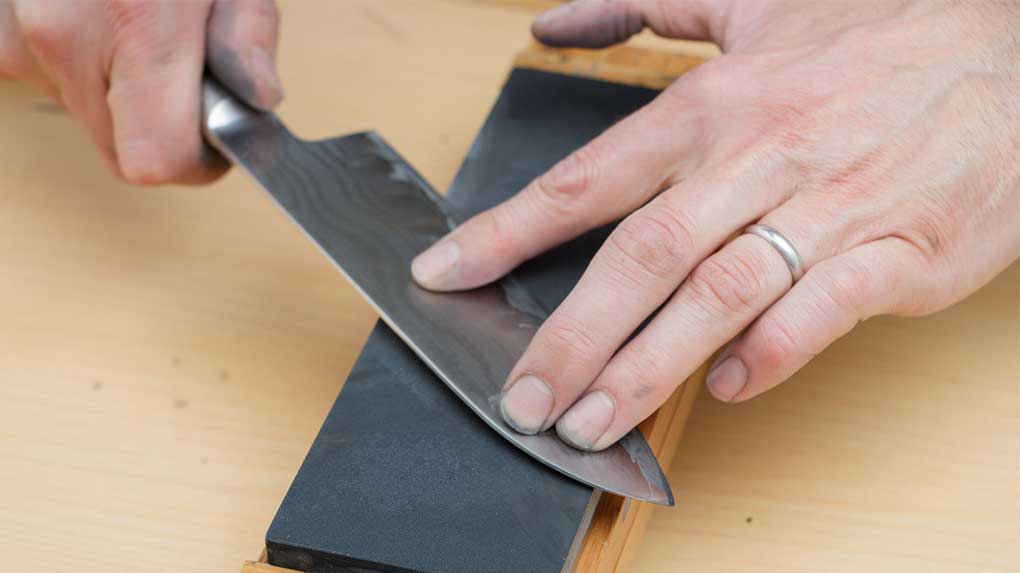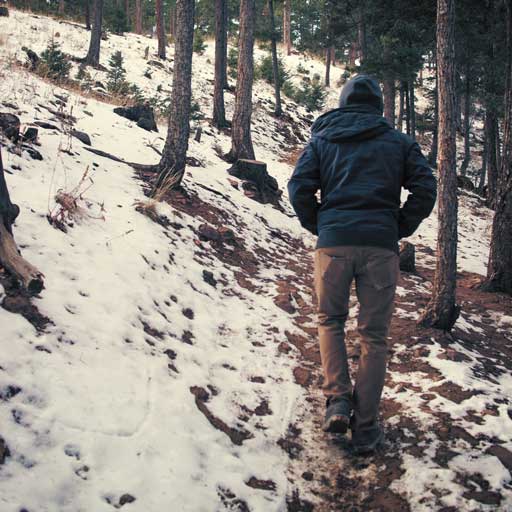As an Amazon Associate we earn from qualifying purchases.
 There are various methods and tools available for knife sharpening. Whetstone is one of the best methods to get a shiny, smooth sharp edge of your knife. It’s a preferred method of sharpening which doesn’t grind away too much of your blade for this it’s suitable for use on either Japanese or Western knives. Actually, it’s the easiest, fastest and most effective way to sharpen knives.
There are various methods and tools available for knife sharpening. Whetstone is one of the best methods to get a shiny, smooth sharp edge of your knife. It’s a preferred method of sharpening which doesn’t grind away too much of your blade for this it’s suitable for use on either Japanese or Western knives. Actually, it’s the easiest, fastest and most effective way to sharpen knives.
It is always a smart approach to know some basic guidelines before using whetstone knife sharpener. We are writing this detailed article to introduce you with the knowledge base of how to use a whetstone to sharpen a knife and related important facts. Let’s jump into it.
Best Whetstones
What is Whetstone?
Whetstone is basically a piece of a rectangular block of stone/rock, that is used to sharpen and hone the edge of knives and other metal tools such as machetes, chisels or axes. Any stone used for sharpening purpose was called a whetstone before. But nowadays, the terms sharpening stone or honing stone have largely replaced by whetstone, but you will still hear it used occasionally. It should keep in mind that; all types of water stones or oil stones are whetstones but all whetstones are not water stone or oil stone.
Whetstone or wet stone which is correct? The question arises because of the words wet and whet sound alike. Actually, they are different, and this is a common source of confusion. The proper word actually is whet, when used about sharpening stones. Whet means to sharpen.
Material of Whetstone
There is a variety of materials used to create whetstones, some are natural, others synthetically produced. Most synthetic stones are composed of aluminum oxide or silicon carbide. Whereas natural stones are typically formed of microcrystalline quartz such as novaculite. Synthetic stones perform better than natural stone but pricy. Natural stones perform better after soaking but synthetic whetstone can shorten its lifespan if you soak it for long times.
Arkansas sharpening stone and Japanese whetstone are prominent natural stones. Whereas, Diamond whetstones and Ceramic sharpening stones are the most common synthetic whetstone.
Whetstone Grit Sizes
The grit size of the whetstone is usually defined as the abrasive quality of the stone. There’s three different grit/grain size of whetstone- coarse grit, medium grit, and finer grit. The smaller the grit value, the coarser the stone. A coarse grit (a lower number) will remove a lot of particles from the blade whereas finer grit (a higher number) is used for finishing an edge smoothly.
There are different types of standards for grit sizes. You will find JIS, CAMI, ANSI, FEPA-P (for sandpaper), FEPA-F (for metal abrasives). Additionally, different trademarked standards for different company are also available in the market.
How to Use a Whetstone
Proper use of whetstone will save your precious time and help you to do the job smoothly with great ease. So, let’s talk about how to use the handy kit.
Step 1: Necessary things
Whenever you intend to check how to use a whetstone, you need some basic things to complete the process. You need a whetstone, a knife, stone base or towel, paper, water and cloth to clean the blade.
Step 2: Getting the stone wet
You must know how long to soak whetstone. 5 to 10 minutes is enough to soak it properly. When there are no air bubbles on water, your stone has absorbed the maximum amount of water. It means the stone is ready to use.
Step 3: Stone placement
Fixed your stone in a flat surface over a towel or non-slippage base so that the stone doesn’t move while sharpening knives.
Step 4: Start with the coarse side
If your knife is highly dull, then start sharpening with the coarse side otherwise finer side. (Here, we’re starting with a coarse side). Note that, you can sharpen a blunt knife entirely using a finer grit, but it will take much longer than starting off with coarse grit and moving onto a finer ones for finishing.
Step 5: Sharpening angle consideration
Place your blade at an angle of 30-35 degrees on the stone if you are sharpening your machete or kukri. Sharpening angles differ from blades size and shape. Hunting knives, pocket knives, survival knives, and sport knives require an angle of 25-30 degrees. Sharpening angle for chef’s knives, kitchen knives are 17-25 degrees. Most Japanese cutlery requires 12-17 degrees while straight razors angle is 7-12 degrees.
Step 6: Sharpen the first side
Firmly hold your knife with first hand and apply suitable pressure by the off-hand. Then, draw the blade along the stone from tip to handle until sharpened nicely. Repeat the actions several times.
Step 7: Switch over the blade’s second side
Switch over your blade and repeat step 6 for sharpening its other side.
Step 8: Check knife’s sharpness
Check your knife’s sharpness. Carefully run your thumb perpendicular to the blade or cut some pieces of paper to check its sharpness.
Step 9: Sharpen with the finer side
If you feel the edge is sharpened enough with the coarse side, then flip over your stone to the finer side and repeat step 5,6 and 7 for a more smooth edge. Before flip over your stone be sure the stone is still wet. If it’s not, just splash some water on it, you needn’t re-soak it.
Step 10: Finish sharpening and clean it
After sharpening is done, clean both the whetstone and knife by removing metal particles and keep them in a dry place.
Tips While Using a Whetstone
- Use gloves or cloth to avoid frictional heat and chips
- Be careful otherwise, injuries may occur
- Maintain same angle and the same pressure
- Maintain the same direction for sharpening, whether front to back or back to front
- Use whetstone and knives manual for better result
- Keep the whetstone clean and in a dry place
Final Words
Sharpening is like a hangover cure. You don’t need to invest thousand dollars to get a superb quality knife but you can make your average knife a precious one by sharpening it by a good quality sharpener. Whetstones are not very pricy but serve you quality work. It will be a handy tool for hiking, camping or survival situations. It will accompany your survival tools greatly. And after sharpening your blade, assure its safety.
Hope, this guideline will help you to use a whetstone correctly. Follow the processes and practice frequently and become a perfect whetstone user/ knife sharpener. Try to know some further tips and tricks for using sharpening stones effectively and maintain safety procedure. Share this guideline with your friends!
Amazon and the Amazon logo are trademarks of Amazon.com, Inc, or its affiliates.

Danny is an avid hunter and outdoorsman who just love the wilderness. He learned the surviving techniques from his predecessors and became the skilled man of today. He is a family guy who loves his family dearly. From an early age, he became very fascinated with different survival tools among which machete was one of them. This website is for sharing his knowledge and skills for those who feel a close bond with nature just like him.







![Gerber Gear Gator Machete JR [31-000759]](https://m.media-amazon.com/images/I/31d6Fh83GdL._SL160_.jpg)









Leave a Reply